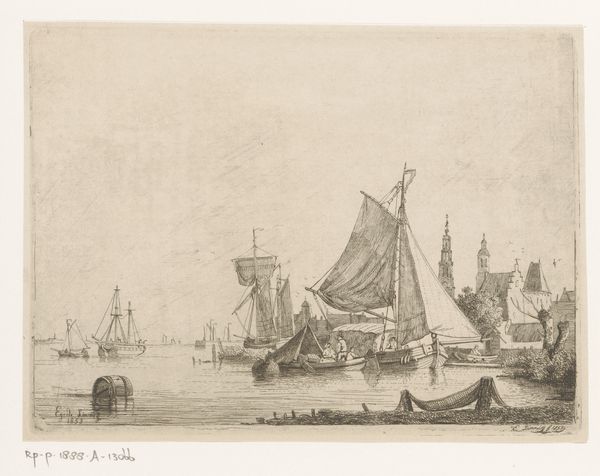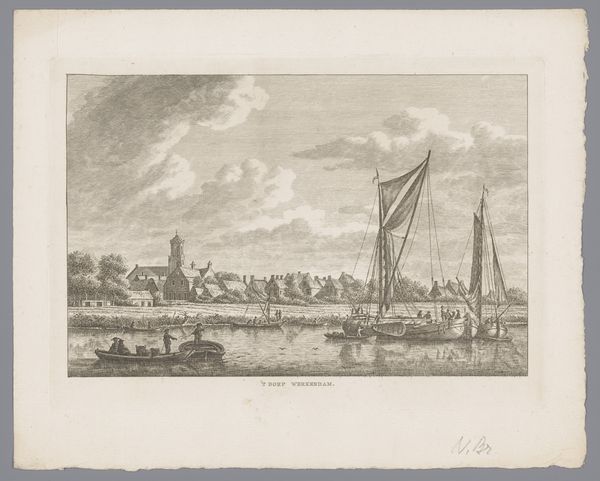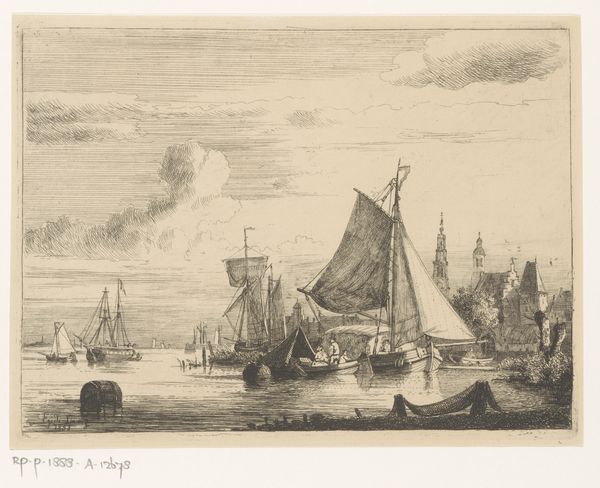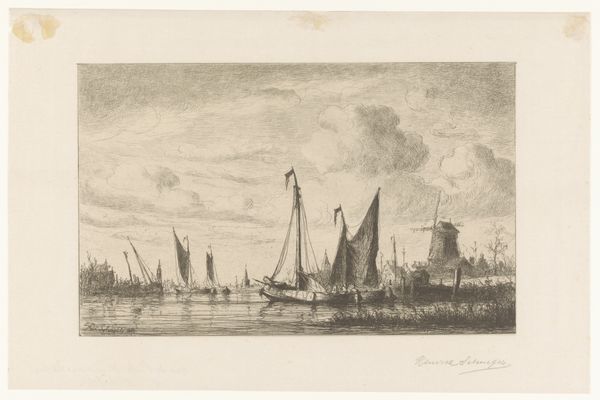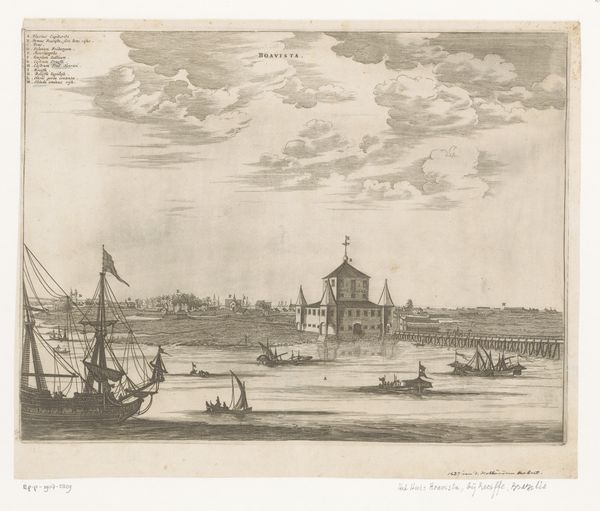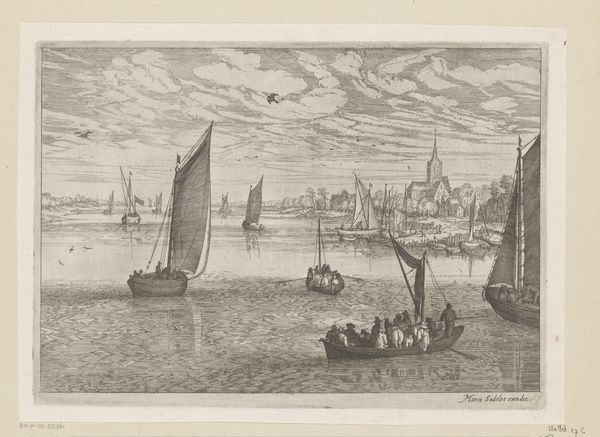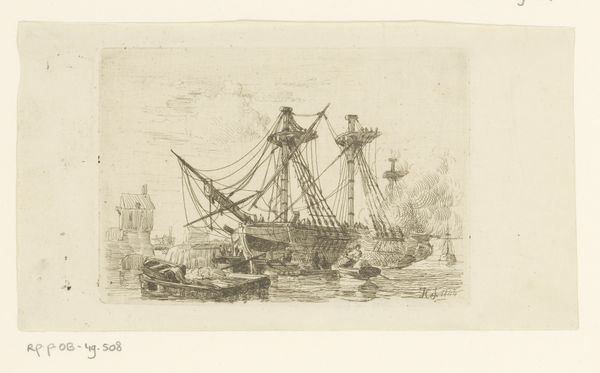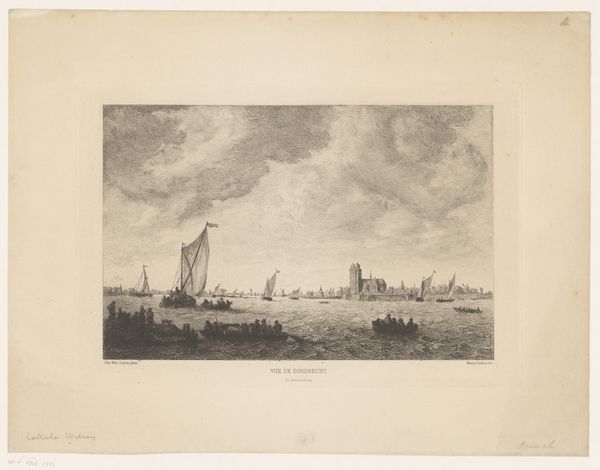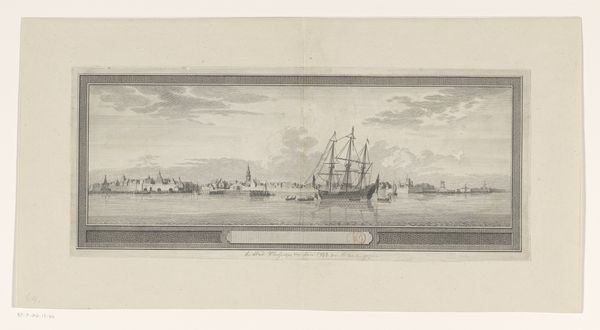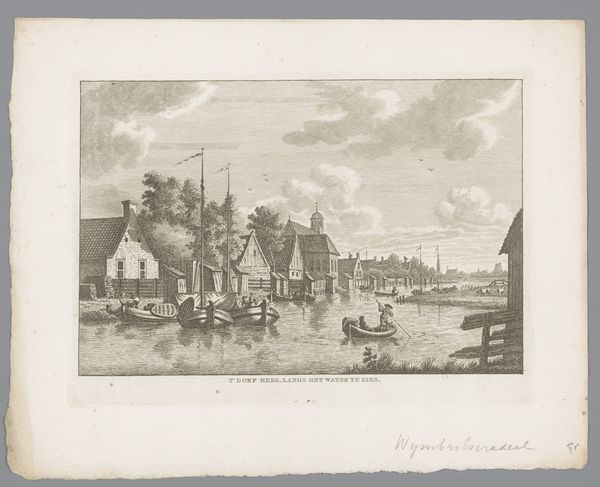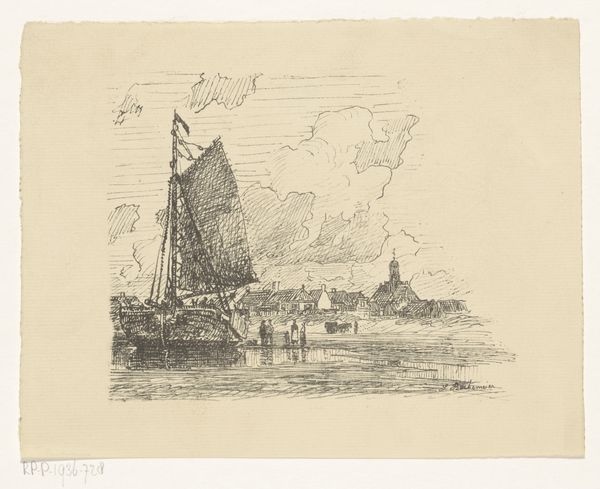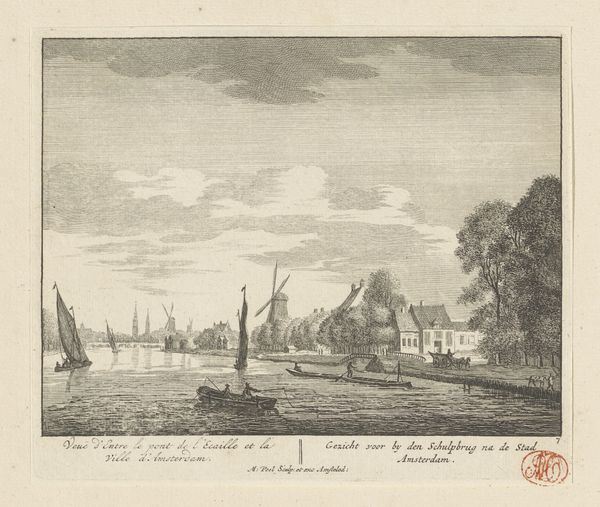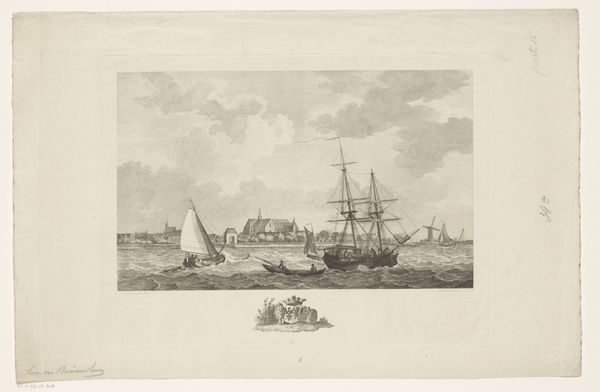
print, etching
#
baroque
#
dutch-golden-age
# print
#
etching
#
old engraving style
#
landscape
#
cityscape
Dimensions: height 155 mm, width 225 mm
Copyright: Rijks Museum: Open Domain
Curator: Ah, this is Wenceslaus Hollar’s "View of Dordrecht," made in 1651. A detailed etching, quite characteristic of Dutch Golden Age landscape prints. Editor: My initial impression is of a quiet, industrious scene. It's incredible how much detail he packs into this small format. You can practically feel the weight of those ships anchored in the harbor. Curator: Precisely. Hollar, despite being Bohemian, perfectly captured the spirit of the Dutch Republic, and particularly its reliance on trade. See how the city's silhouette, dominated by the Great Church, provides a backdrop to this activity. Dordrecht, being one of the oldest cities in Holland, carries significant weight. Editor: I'm interested in the choice of etching, particularly given the rise of engraving at the time. The comparative ease with which Hollar could render these intricate lines surely enabled such detail. Consider the implications for the dissemination of information; images like these allowed the public to visualize and understand the Dutch mercantile power. Curator: Absolutely. These images functioned almost as advertisements, subtly promoting the prosperity and order of Dutch society. It reflects the societal values embedded within each piece – not only trade, but piety, order, and civic pride as we note the central church tower. Editor: Looking closer, I wonder about Hollar’s relationship with his workshop and printers. The edition size would influence not only the immediate economic gains, but also how the visual rhetoric could proliferate over time and what it did for his reputation. Did he directly oversee each print run? Or was it a more decentralized operation? Curator: Those are vital questions about his output that can’t be easily addressed just from looking at this artwork itself. Still, by focusing on its rich imagery, and considering its context, we see a complete picture. Editor: Indeed, we start with the object itself and broaden outward. In this way we see it can both illuminate a moment and suggest broader forces. Curator: This etching does just that: It shows us both the microcosm and macrocosm of 17th-century Dutch life.
Comments
No comments
Be the first to comment and join the conversation on the ultimate creative platform.
